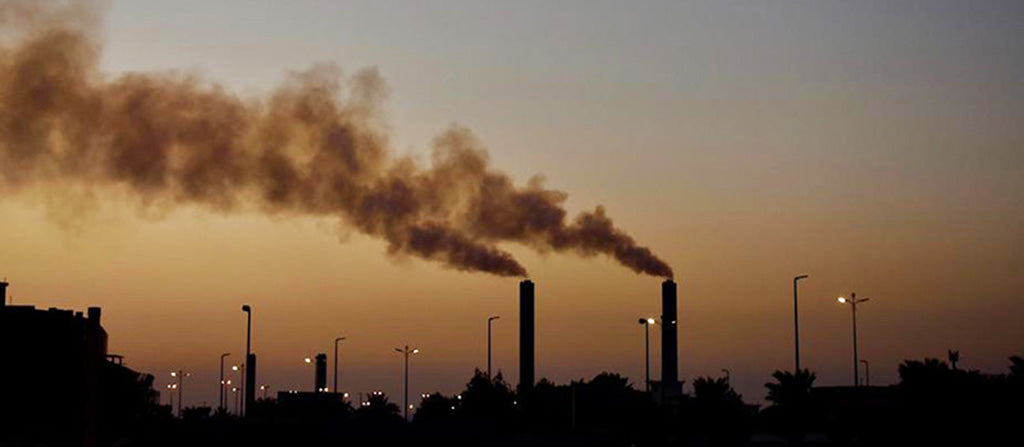
Oxygen measurement is critical when testing exhaust flue gases in furnaces or boilers. A flue, like a smokestack or a chimney, is the vertical pipe which allows exhaust gases from combustion to be vented into the atmosphere. The exhaust gases are the result of burning fuel inside a furnace, oven, boiler or steam generator.
Wherever combustion occurs, there will be exhaust gases. Measuring the oxygen level in the exhaust gas is an indicator of the efficiency of the combustion process.
Industrial Furnace Flue Gas Measurement
Unlike furnaces to heat homes or buildings, industrial furnaces are direct heat furnaces used to provide heat for an industrial process like chemical reactions, cremation, oil refining or the production of glass. In addition, some industrial furnaces also transfer heat via coils to a fluid which can then be circulated to provide building heat or for other processes.
The biggest difference between a residential furnace and an industrial furnace is not the size, but the amount of heat produced. Industrial processes often require 400°C (750°F) or more.
Because of the high temperatures and need for constant monitoring to maintain an efficient fuel-air ratio, industrial furnaces use permanently mounted oxygen sensors.
One example of this is the OXY-FLEX Oxygen Analyzer. It has a 400mm (16”) probe that is inserted into the flue gas stack. This long probe length makes the sensor ideal for thicker-walled flues. The tip of the probe measures the oxygen content from 0.01 to 100% and at temperatures between -100 and 400°C (-148-750°F).
In addition to higher heat levels, depending on the fuel being burned industrial furnaces may produce soot particles. This is especially true for furnaces that burn coal or some fuel oils. Soot can clog the oxygen sensor. Therefore, when installing an oxygen sensor in an industrial furnace it is important to consider the fuel being used. While some oxygen sensors are not designed to work in a high soot environment, soot fouling can be mitigated by using baffles to force particulate matter around the sensor.
Residential Forced-Air Furnaces
In residential or commercial building furnaces, gas or oil is mixed with air and ignited to create a flame inside the combustion chamber. A heat exchanger transfers the heat from the combustion chamber to fresh air that is circulated throughout the building.
In order to maximize efficiency, the furnace controls the ratio of fuel and air released into the combustion chamber. Too much fuel or too much air (oxygen) lowers the energy efficiency of the furnace, and can increase the amount of NOx and carbon monoxide gas molecules formed.
In residential furnaces, optimum fuel-air ratio results in the oxygen level being reduced from 21% (fresh air) to between 8.5-10% oxygen by volume after combustion. To test the oxygen level, a tool called a combustion analyzer is used to measures the amount of oxygen remaining in the flue exhaust gas.
While there are many combustion analyzers on the market, all of them include an oxygen sensor. For example the AlphaSense O2-A2 is a common electrochemical oxygen sensor used in many models of combustion analyzer. The benefit of this sensor is that it is low-cost, easily replaceable in the field, and requires little power so that it can be used in a hand held battery operated device.
The AlphaSense oxygen sensor is a replacement oxygen sensor in many popular handheld 4 gas analyzers including:
- BW Technologies GasAlert MicroClip XT
- BW Technologies GasAlert Max XT-II
- BW Technologies GasAlert Micro 5 PID
- BW Technologies GasAlert Quattro
- BW Technologies GasAlert Extreme GAXT-DL-2
- BW Technologies GasAlert Extreme GAXT-DL-B-2
- BW Equivalent part no. SR-X10-C1
- MSA Solaris Orion Altair 4,5 (not 4X or 5X)
- Fieldpiece SOX3
- CityTech 4OX-2
A variation on a forced-air furnace is the boiler furnace. Instead of air, the heat exchanger transfers the heat to water that is circulated as steam in pipes throughout the building. However, even with boiler heating, a combustion analyzer is still required to verify the fuel-oxygen ratio during combustion.







